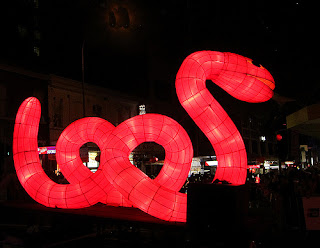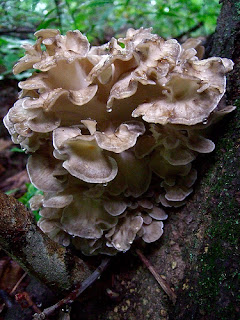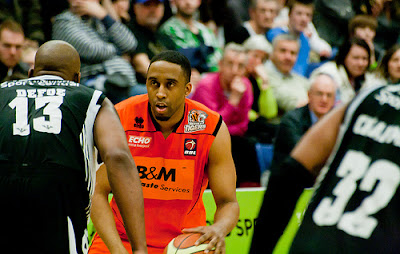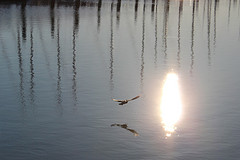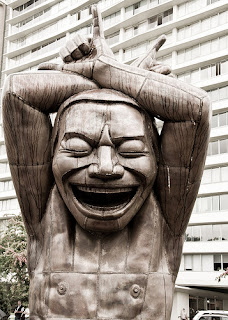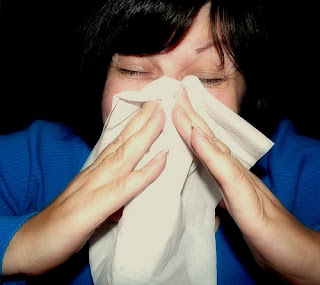Guest Blogger: Kristen Danish, LAP
 It seems that stress has
become an all too familiar work companion for most people. Whether caused by work relationships, getting
to and from work, or the work itself, stress shows up and the effects of it
come in many forms.
It seems that stress has
become an all too familiar work companion for most people. Whether caused by work relationships, getting
to and from work, or the work itself, stress shows up and the effects of it
come in many forms.
What is stress? It’s a normal physiological response to the
demands of life, the physical adaptation to deal with the impending dangers of
the natural world. It can help improve
your chances of survival by increasing hormone levels, heart rate, breathing
and mental awareness. Stress can even assist you to work and perform more
effectively when needed for your job when the pressures on.
Our bodies are designed to
help us react to stressful events. At
the first sign of a threat, whether real or perceived, our sympathetic nervous
system activates and facilitates our “fight or flight” response. Our heart rate increases, our pupils dilate,
and our digestion temporarily shuts down, directing more blood to our
extremities, so that if need be, we can either fight what is threatening us or
turn and run if it is too formidable.
When we are healthy and the
stress is short-lived, we are usually able to recover without too much wear and
tear on our overall health. However if
stress is on-going for a long period of time or becomes extreme, our emotional
health and ultimately, our physical health begins to suffer.
The flight or fight response
is great if we’re avoiding a car accident or responding to a bear sighting on a
hike. However, it the “threat” is a
demanding boss, nasty co-worker or even a worrisome situation that is not being
resolved, this response does not serve us as intended. Quite often, the stress in our lives is
long-term and as a result we find ourselves in a constant state of “flight or
fight.” Over time, this condition takes
its toll. Cortisol, the body’s stress
hormone elevates, blood pressure increases, and our immune function is
suppressed. If not relieved, these symptoms will become worse and can develop
into anxiety, depression, fatigue, digestive problems, tight shoulders, and
tension headaches. This continual
stressed state is detrimental to your reserves of vitality and energy which
begins to interfere with your ability to fight off disease.
It has been difficult to
develop a controlled, blinded study measuring the effects of acupuncture on
stress relief. However, a recent study
conducted by researchers from Georgetown University Medical Center in
Washington, D.C., it was shown that when treated with electro-acupuncture
properly, neuropeptides, the protein that are increased to handle stressful
situations, were measurably reduced.
Published in the journal Experimental Biology and Medicine on January 1,
2012. In another study conducted by 2
researchers at Yale University School of Medicine, a group of patients was
assembled for a blind, randomized,
controlled trial. The patients
were undergoing surgery which created an acute anxiety condition. The study found that while acupuncture
treatment did not produce physiological changes, subjects who received acupuncture
experienced a profound change in their behavioral anxiety levels. In addition, they stated that “The results of
the study suggest that acupuncture may be an effective treatment for
individuals experiencing intense levels of daily stress and anxiety.”
In Chinese medicine, stress,
anxiety, depression or any strong emotion interrupts the smooth flow of energy
throughout the body. We look at all of
the different “channels” of energy to find where it is moving either too fast,
too slow, or has become stagnant. The
channels are related to and named after different organs, for example, with
stress we are generally interested in the TCM (Traditional Chinese Medicine) liver organ system. When the body is overworked or
overwhelmed by stress, it tights up. This tightening affects the TCM Liver organ and related channel. The Liver is responsible for moving qi (energy) throughout the body. When the body tights up due to stress, the Liver qi becomes inhibited, slows down and become blocked. These blockages lead to all of the symptoms resulting from too much stress.
Through acupuncture, these
energy blockages can be addressed.
Acupuncture points energize and get the channels flowing smoothly
again. Treatments not only alleviate the
symptoms of stress and anxiety, but the stress itself, helping to prevent
further symptomatic episodes caused by it.
By balancing the mind and body, our reactions to the same situations can
be calmer, more relaxed and less upsetting.
This is referred to as a sense of well-being and is long lasting,
especially with some effort by the patient.
From a Western medical
viewpoint, acupuncture works to alleviate stress by releasing neurotransmitters
and natural pain-killing endorphins from the brain. In addition, acupuncture improves circulation
of blood, which oxygenates the tissues and cycles out cortisol and other waste
chemicals. The calming nature of
acupuncture also lowers blood pressure, decreases heart rate if needed, and
relaxes the muscles and mind.
By using acupuncture for stress, the entire
body and mind become balanced and stronger and better able to handle the next
situation that shows up in life. There
is no down side, it’s relatively painless and the only side effects are
increased relaxation, more energy and a better nights sleep.
Photo: Scream-08 (small), University of Salford, flickr creative commons 2.0







